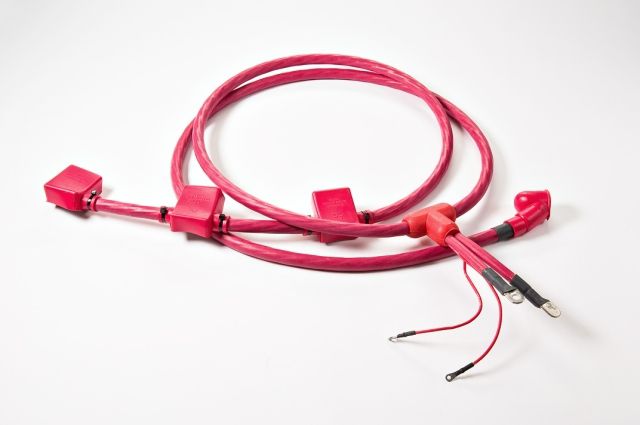
Battery cables form the network that allows the battery to function the way it should. It is the link that joins the battery, the charging system and the load. Its function is to carry the current from the battery to the alternator and starter. So, every time you start your car, it is the cable that actually fires up the engine.
Battery cables are attached to the battery, usually at the top. There are two type of cables running from the battery, one negative and the other positive. In a vehicle, the positive cable is attached to the starter, while the negative cable is usually attached to the firewall. Because of the vital role they play in the working of any battery and engine system, battery cables manufacturers have to abide some pretty strict rules and regulations.
Usage
Battery cables have a wide use, since they are essential with a battery. We are most familiar with its automotive usage. But battery cables are also used with marine engines. Since the cable is the channel through which power is routed to an engine, it usually sees heavy usage. The cables in your car, for instance, are used every time your vehicle is used.
Heavy wear and tear also means that battery cables also wear out fast. Usually when a cable disintegrates or gets damaged, it has to be completely replaced. There are no chances of ad-hoc repairs here! The other reason a cable will effect the working of the engine is because of a faulty connection. This not only affects the system performance, it will also affect the battery and its working. It can even damage the battery.
Symptoms of cable fault
Since we do not usually pop the lid of our car to check its interiors every other day, we may miss the initial signs of corrosion or damage. But there are signs that show us that we may have a problem with the battery cable. Some of these symptoms are:
- Your car does not start quickly
- It makes a clicking noise when you try to start it
- Other electrical components in the car are giving your trouble.
These are all signs that the electrical system in your car is failing. Since this usually is powered by the battery, the problem is often traced to the battery or the battery cables. When you try to fix the problem, you find that the cables have to be moved around a bit for the right connection. This means that there is already a problem at hand. Alternatively, the damage might be visible to the eye!
Some of the faults, like corrosion around the terminal can be fixed by you on the spot but in most cases, it is prudent to call the mechanic.
Causes of faulty connections
Battery cable manufacturers also warn about faulty connections. There could be many reason for that.
Loose connections: A common reason for this is over-torque. It can cause terminal breakage, meltdown and even fire. To avoid this, we should clean both the battery terminal and the cable connector with a wire brush. Use lock-nuts instead of hex-nuts to secure the connection and keep checking it.
Corrosion: A very common reason for faulty connection and cable damage is corrosion at the terminal posts. You will see this in the form of white flaky deposit at the terminal. This is the result of corrosion from the chemical reactions within the battery. In such cases, you must clean it immediately. Detach the cables and clean all the mating surfaces with a terminal post cleaning brush. If you do not have that, use a small wire brush.
Now clean it with a solution of baking soda and water. Make sure that you dry the surface thoroughly after that. You can also apply a corrosion inhibitor to give the top some elementary existence to corrosion. A thin coat of petroleum jelly will also do the trick.
Undersized cable: Using the wrong sized cable can cause overloading and heating. This is why it is important to check all information on ampacity by the battery cable manufacturer. The ampacity is measurement of voltage that the cable can safely carry.

/image%2F2036066%2F20160422%2Fob_581968_control-cable.jpg)